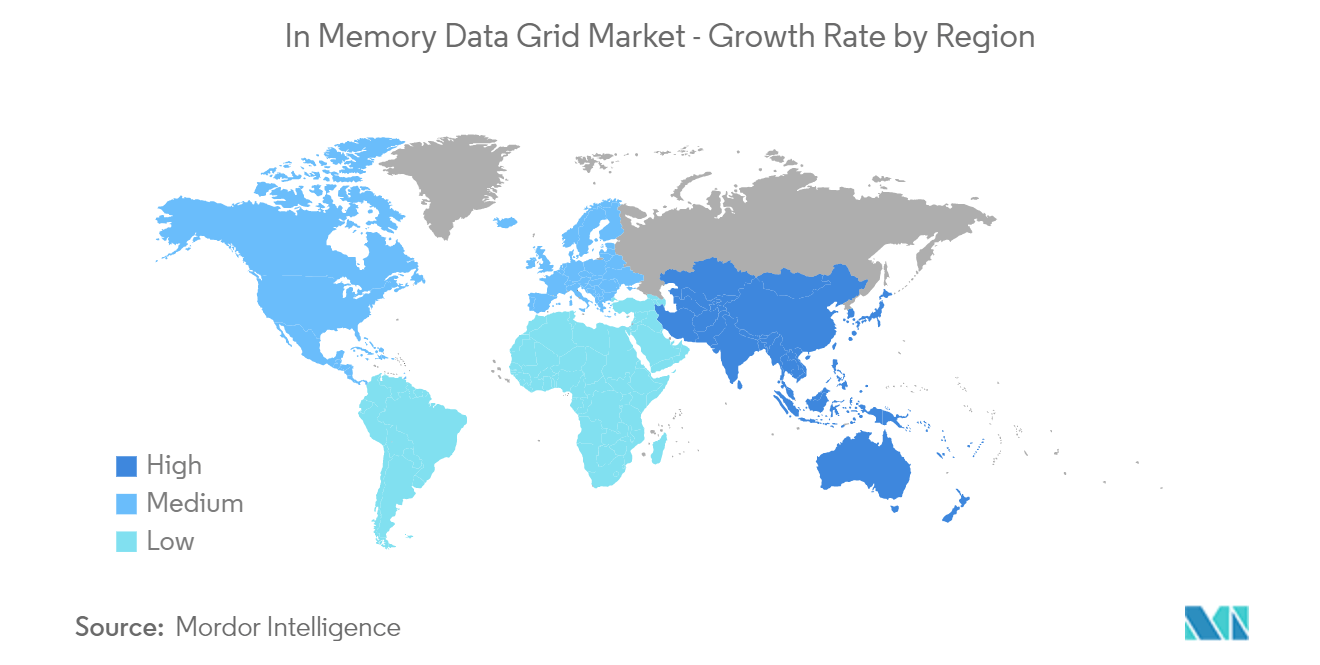Market Trends of In Memory Data Grid Industry
Growing Need for Real Time Data Processing in BFSI Driving the Market Growth
- Growing digitalization is compelling financial companies to build a lean, flexible, and efficient approach to cater to their customers. Financial institutions deal with critical information, which, if not properly processed, can have severe financial and ethical implications. Thus, financial organizations worldwide seek in-memory data grid solutions to process data in real-time and improve their business-critical applications.
- The growing adoption of cloud computing in the BFSI industry is also driving the demand for in-memory data grids, as cloud-based in-memory data grids solutions provide greater flexibility, scalability, and cost-effectiveness compared to on-premises traditional solutions making them a suitable option for BFSI organizations.
- Furthermore, the growing need for real-time data processing in the BFSI industry is increasing the demand for in-memory data grids to store and process large volumes of data in memory, high-speed data access, and suitability for cloud-based deployments.
- Leading banks significantly depend on GridGain Systems Inc., one of the prominent providers of In-memory data grids, to help them offer an integrated omnichannel banking experience. By using the GridGain solution, organizations have added speed and scale to digital channels, opened up previously siloed data for seamless sharing across channels, and implemented in-process HTAP using real-time streaming analytics, machine, and deep learning to monitor and enhance the end-to-end banking experience proactively.
- Moreover, banks witnessed a sharp rise in internal and external fraud cases from the COVID-19 outbreak. The COVID-19 outbreak rescue package increased fraud, false claims, and other scams. Many of the systems that financial institutions and government agencies in place needed to verify the identity and claims of applicants adequately. For instance, according to National Police Agency Japan, the police in Japan recorded 1,136 online banking fraud cases in 2022, which constituted a substantial increase compared to the previous year.

North America is Expected to Hold Major Share
- North America is expected to account for a larger share of the In-memory data grid market during the forecast period due to increasing regulatory compliances among organizations to boost in-memory data grid adoption across enterprises, indicating potential market growth.
- The adoption of an in-memory data grid is rising in the region, primarily attributed to the burgeoning demand for faster processing and analytics on big data coupled with the need for simplifying architecture as the number of various data sources increases. Technology enhancements that optimize the total ownership cost are another factor driving the market growth.
- The growth of new business insights contributes to expanding the market in the United States as various data sources increase. Multiple companies are leveraging big data to enhance marketing and customer experience and identify fraud and risk that can directly strengthen business performance. According to the US-based Coalition Against Insurance Fraud, fraud accounts for 5-10% of claims costs for American and Canadian insurers. Some insurers expect the total to be as high as 20% of the claims costs. Across all insurance lines in the North American region, the estimated cost is between USD 80 billion and USD 90 billion.
- The healthcare industry, which embraces the cloud for its Electronic health record (EHR) data and other enterprise applications, is also becoming a great data source. For instance, according to GNS Healthcare, a US-based Data Analytics Company, the United States healthcare industry generates an estimated 1.2 billion clinical care documents annually. Hence, growth in data across end-user industries is anticipated to create real-time processing, thereby creating opportunities for the market.
- The presence of a prominent player, which continues to see rapid adoption among Global 2000 organizations, including many of the world's leading financial institutions, such as JPMorgan Chase, National Australia Bank, Lloyds Banking Group, UBS, and many more, is contributing to the revenue generation in the region.


